The Investigation of a Biocide-Free Antifouling Coating on Naval Steels Under Both Simulated and Actual Seawater Conditions
Abstract
1. Introduction
2. Materials and Methods
2.1. Coating Preparation
2.1.1. Synthesis of Magnetite (Fe3O4) Nanoparticles (Comp. A)
2.1.2. Synthesis of the Aniline–Carboxylic Acid Dimer (C6H5NH2-COOH Dimer) (Comp. B)
2.1.3. Synthesis of the Aniline–Magnetite Monomer (Comp. C)
2.1.4. Synthesis of Polyaniline (PAni) Nanorods Integrated with Magnetite (Fe3O4) Nanoparticles (Comp. D)
2.1.5. Synthesis of Graphene Oxide (GO) Sheets (Comp. Ε)
2.1.6. Modified Graphene Oxide (GO) Sheets with Titania (TiO2) (Comp. F)
2.1.7. Synthesis of the Antifouling Coating (AF Coating)
2.2. Characterization of the Coating
2.3. Panel Preparation
2.4. Laboratory Immersion Tests in Artificial Seawater
2.4.1. Corrosion Tests
2.4.2. Characterization Methods for Immersed Samples in ASW
2.5. In Situ Immersion Tests
2.5.1. Exposure Sites and Immersion Times
2.5.2. Characterization Methods for Immersed Samples in Natural Sea Water
3. Results
3.1. Characterization of the Antifouling Coating
3.2. Laboratory Corrosion Tests of the Antifouling Coating
3.3. In Situ Corrosion Tests of the Antifouling Coating
4. Discussion
5. Conclusions
6. Patents
Author Contributions
Funding
Data Availability Statement
Acknowledgments
Conflicts of Interest
Abbreviations
| PAni | polyaniline |
| GO | graphene oxide |
| TBT | tributyltin |
| SPC | Self-Polishing Coating |
| ASW | artificial seawater |
| AF | antifouling |
| β-CD | β-cyclodextrin |
| APS | ammonium persulfate |
| PEO | poly ethylene oxide |
| SEM | Scanning Electron Microscopy |
| TEM | Transmission Electron Microscope |
| FTIR | Fourier Transform Infrared Spectroscopy |
| TUNA | Tunneling Atomic Force Microscopy |
| XRF | X-Ray Fluorescence |
| Wi | the weight of the specimen prior-corrosion |
| Wf | the weight of the specimen post-corrosion |
| WL | weight loss |
| c-AFM | conductive AFM |
| WCA | water contact angle |
| IE | inhibition efficiency |
References
- Caruso, G. Microbial Colonization in Marine Environments: Overview of Current Knowledge and Emerging Research Topics. JMSE 2020, 8, 78. [Google Scholar] [CrossRef]
- Li, L.; Hong, H.; Cao, J.; Yang, Y. Progress in Marine Antifouling Coatings: Current Status and Prospects. Coatings 2023, 13, 1893. [Google Scholar] [CrossRef]
- Clare, A.S.; Rittschof, D.; Gerhart, D.J.; Maki, J.S. Molecular Approaches to Nontoxic Antifouling. Invertebr. Reprod. Dev. 1992, 22, 67–76. [Google Scholar] [CrossRef]
- Vuong, P.; McKinley, A.; Kaur, P. Understanding Biofouling and Contaminant Accretion on Submerged Marine Structures. Npj Mater. Degrad. 2023, 7, 50. [Google Scholar] [CrossRef]
- Cirillo, A.; Tomaiuolo, G.; Guido, S. Membrane Fouling Phenomena in Microfluidic Systems: From Technical Challenges to Scientific Opportunities. Micromachines 2021, 12, 820. [Google Scholar] [CrossRef]
- Martín-Rodríguez, A.J.; Babarro, J.M.F.; Lahoz, F.; Sansón, M.; Martín, V.S.; Norte, M.; Fernández, J.J. From Broad-Spectrum Biocides to Quorum Sensing Disruptors and Mussel Repellents: Antifouling Profile of Alkyl Triphenylphosphonium Salts. PLoS ONE 2015, 10, e0123652. [Google Scholar] [CrossRef] [PubMed]
- Weber, F.; Esmaeili, N. Marine Biofouling and the Role of Biocidal Coatings in Balancing Environmental Impacts. Biofouling 2023, 39, 661–681. [Google Scholar] [CrossRef]
- Vinagre, P.A.; Simas, T.; Cruz, E.; Pinori, E.; Svenson, J. Marine Biofouling: A European Database for the Marine Renewable Energy Sector. JMSE 2020, 8, 495. [Google Scholar] [CrossRef]
- Yebra, D.M.; Kiil, S.; Dam-Johansen, K. Antifouling Technology—Past, Present and Future Steps towards Efficient and Environmentally Friendly Antifouling Coatings. Prog. Org. Coat. 2004, 50, 75–104. [Google Scholar] [CrossRef]
- Champ, M.A. A Review of Organotin Regulatory Strategies, Pending Actions, Related Costs and Benefits. Sci. Total Environ. 2000, 258, 21–71. [Google Scholar] [CrossRef]
- Selim, M.S.; Shenashen, M.A.; El-Safty, S.A.; Higazy, S.A.; Selim, M.M.; Isago, H.; Elmarakbi, A. Recent Progress in Marine Foul-Release Polymeric Nanocomposite Coatings. Prog. Mater. Sci. 2017, 87, 1–32. [Google Scholar] [CrossRef]
- Chambers, L.D.; Stokes, K.R.; Walsh, F.C.; Wood, R.J.K. Modern Approaches to Marine Antifouling Coatings. Surf. Coat. Technol. 2006, 201, 3642–3652. [Google Scholar] [CrossRef]
- Dafforn, K.A.; Lewis, J.A.; Johnston, E.L. Antifouling Strategies: History and Regulation, Ecological Impacts and Mitigation. Mar. Pollut. Bull. 2011, 62, 453–465. [Google Scholar] [CrossRef]
- Satasiya, G.; Kumar, M.A.; Ray, S. Biofouling Dynamics and Antifouling Innovations: Transitioning from Traditional Biocides to Nanotechnological Interventions. Environ. Res. 2025, 269, 120943. [Google Scholar] [CrossRef]
- Railkin, A.I. Marine Biofouling, 1st ed.; CRC Press: Boca Raton, FL, USA, 2003; ISBN 978-0-203-50323-2. [Google Scholar]
- Terlizzi, A.; Fraschetti, S.; Gianguzza, P.; Faimali, M.; Boero, F. Environmental Impact of Antifouling Technologies: State of the Art and Perspectives. Aquat. Conserv. 2001, 11, 311–317. [Google Scholar] [CrossRef]
- Omae, I. General Aspects of Tin-Free Antifouling Paints. Chem. Rev. 2003, 103, 3431–3448. [Google Scholar] [CrossRef] [PubMed]
- Wahl, M. Marine Epibiosis. I. Fouling and Antifouling: Some Basic Aspects. Mar. Ecol. Prog. Ser. 1989, 58, 175–189. [Google Scholar] [CrossRef]
- Sahoo, B.N.; Thomas, P.J.; Thomas, P.; Greve, M.M. Antibiofouling Coatings for Marine Sensors: Progress and Perspectives on Materials, Methods, Impacts, and Field Trial Studies. ACS Sens. 2025, 10, 1600–1619. [Google Scholar] [CrossRef]
- Jin, H.; Wang, J.; Tian, L.; Gao, M.; Zhao, J.; Ren, L. Recent Advances in Emerging Integrated Antifouling and Anticorrosion Coatings. Mater. Des. 2022, 213, 110307. [Google Scholar] [CrossRef]
- Papadopoulos, N.D.; Vourna, P.; Falara, P.P.; Koutsaftiki, P.; Xafakis, S. Dual-Function Coatings to Protect Absorbent Surfaces from Fouling. AIMSMATES 2023, 10, 981–1003. [Google Scholar] [CrossRef]
- Schultz, M.P.; Walker, J.M.; Steppe, C.N.; Flack, K.A. Impact of Diatomaceous Biofilms on the Frictional Drag of Fouling-Release Coatings. Biofouling 2015, 31, 759–773. [Google Scholar] [CrossRef]
- Schultz, M.P. Effects of Coating Roughness and Biofouling on Ship Resistance and Powering. Biofouling 2007, 23, 331–341. [Google Scholar] [CrossRef]
- Falara, P.P.; Papadopoulos, N.D.; Vourna, P. Microstructure and Performance of Antibiofouling Coatings on High-Strength Steel Substrates Immersed in the Marine Environment. Micro 2022, 2, 277–294. [Google Scholar] [CrossRef]
- Paz-Villarraga, C.A.; Castro, Í.B.; Fillmann, G. Biocides in Antifouling Paint Formulations Currently Registered for Use. Environ. Sci. Pollut. Res. 2022, 29, 30090–30101. [Google Scholar] [CrossRef]
- Papadopoulos, N.; Vourna, P.; Falara, P.; Vourna, P. A Modern Approach Towards Efficient Antifouling Coating Technologies. Nanotechnol. Adv. Mater. Sci. 2023, 6, 1–4. [Google Scholar] [CrossRef]
- Banerjee, I.; Pangule, R.C.; Kane, R.S. Antifouling Coatings: Recent Developments in the Design of Surfaces That Prevent Fouling by Proteins, Bacteria, and Marine Organisms. Adv. Mater. 2011, 23, 690–718. [Google Scholar] [CrossRef]
- Farkas, A.; Degiuli, N.; Martić, I. An Investigation into the Effect of Hard Fouling on the Ship Resistance Using CFD. Appl. Ocean. Res. 2020, 100, 102205. [Google Scholar] [CrossRef]
- Byrnes, T.A.; Dunn, R.J.K. Boating- and Shipping-Related Environmental Impacts and Example Management Measures: A Review. JMSE 2020, 8, 908. [Google Scholar] [CrossRef]
- Liu, P.; Zhang, H.; Fan, Y.; Xu, D. Microbially Influenced Corrosion of Steel in Marine Environments: A Review from Mechanisms to Prevention. Microorganisms 2023, 11, 2299. [Google Scholar] [CrossRef] [PubMed]
- Davidson, I.C.; Smith, G.; Ashton, G.V.; Ruiz, G.M.; Scianni, C. An Experimental Test of Stationary Lay-up Periods and Simulated Transit on Biofouling Accumulation and Transfer on Ships. Biofouling 2020, 36, 455–466. [Google Scholar] [CrossRef] [PubMed]
- Shi, X.; Liang, H.; Li, Y. Review of Progress in Marine Anti-Fouling Coatings: Manufacturing Techniques and Copper- and Silver-Doped Antifouling Coatings. Coatings 2024, 14, 1454. [Google Scholar] [CrossRef]
- Sarkar, P.K.; Pawar, S.S.; Rath, S.K.; Kandasubramanian, B. Anti-Barnacle Biofouling Coatings for the Protection of Marine Vessels: Synthesis and Progress. Environ. Sci. Pollut. Res. 2022, 29, 26078–26112. [Google Scholar] [CrossRef]
- Nurioglu, A.G.; Esteves, A.C.C.; De With, G. Non-Toxic, Non-Biocide-Release Antifouling Coatings Based on Molecular Structure Design for Marine Applications. J. Mater. Chem. B 2015, 3, 6547–6570. [Google Scholar] [CrossRef]
- Hu, P.; Xie, Q.; Ma, C.; Zhang, G. Silicone-Based Fouling-Release Coatings for Marine Antifouling. Langmuir 2020, 36, 2170–2183. [Google Scholar] [CrossRef]
- Xie, L.; Hong, F.; He, C.; Ma, C.; Liu, J.; Zhang, G.; Wu, C. Coatings with a Self-Generating Hydrogel Surface for Antifouling. Polymer 2011, 52, 3738–3744. [Google Scholar] [CrossRef]
- Liang, H.; Shi, X.; Li, Y. Technologies in Marine Antifouling and Anti-Corrosion Coatings: A Comprehensive Review. Coatings 2024, 14, 1487. [Google Scholar] [CrossRef]
- Poornima Vijayan, P.; Formela, K.; Saeb, M.R.; Chithra, P.G.; Thomas, S. Integration of Antifouling Properties into Epoxy Coatings: A Review. J. Coat. Technol. Res. 2022, 19, 269–284. [Google Scholar] [CrossRef]
- Maan, A.M.C.; Hofman, A.H.; De Vos, W.M.; Kamperman, M. Recent Developments and Practical Feasibility of Polymer-Based Antifouling Coatings. Adv. Funct. Mater. 2020, 30, 2000936. [Google Scholar] [CrossRef]
- Romeu, M.J.; Mergulhão, F. Development of Antifouling Strategies for Marine Applications. Microorganisms 2023, 11, 1568. [Google Scholar] [CrossRef] [PubMed]
- Ryan, E.; Turkmen, S.; Benson, S. An Investigation into the Application and Practical Use of (UV) Ultraviolet Light Technology for Marine Antifouling. Ocean. Eng. 2020, 216, 107690. [Google Scholar] [CrossRef]
- Selim, M.S.; Hamouda, H.I.; Fatthallah, N.A.; Mostafae, M.S.; Higazy, S.A.; Shabana, S.; EL-Saeed, A.M.; Hao, Z. Advanced Bioinspired Superhydrophobic Marine Antifouling Coatings. In Superhydrophobic Coating—Recent Advances in Theory and Applications; IntechOpen: London, UK, 2023; ISBN 978-0-85466-281-4. [Google Scholar]
- Mamman, R.O.; Johnson, T.; Weerakkody, T.; Lamuta, C. Fouling Release Mechanism of an Octopus-Inspired Smart Skin. Adv. Funct. Mater. 2024, 34, 41. [Google Scholar] [CrossRef]
- Niu, W.; Qian, J.; Wang, X.; Liang, C.; Cui, L.; Tian, H.; Liaw, P.K. Research Progress of Self-Healing Coatings on Ships Against Biological Pollution: A Review. Coatings 2025, 15, 486. [Google Scholar] [CrossRef]
- Guo, R.; Tan, Y.; Fang, M.; Li, L.; Chen, Q.; Qin, W.; Liu, N.; Mo, Z. Multifunctional Superhydrophobic Coatings with Self-Cleaning and Anti-Fouling Properties for Corrosion Protection of Metals. Surf. Interfaces 2024, 50, 104476. [Google Scholar] [CrossRef]
- Nahum, Y.; Gross, N.; Cerrone, A.; Matouš, K.; Nerenberg, R. Effect of Biofilm Physical Characteristics on Their Susceptibility to Antibiotics: Impacts of Low-Frequency Ultrasound. Npj Biofilms Microbiomes 2024, 10, 70. [Google Scholar] [CrossRef] [PubMed]
- Kunlasubpreedee, P.; Tobino, T.; Nakajima, F. Influence of High-Frequency, Low-Voltage Alternating Electric Fields on Biofilm Development Processes of Escherichia coli and Pseudomonas aeruginosa. Water 2023, 15, 3055. [Google Scholar] [CrossRef]
- Liu, G.; Yuan, Z.; Incecik, A.; Leng, D.; Wang, S.; Li, Z. A New Biomimetic Antifouling Method Based on Water Jet for Marine Structures. Proc. Inst. Mech. Eng. Part M J. Eng. Marit. Environ. 2020, 234, 573–584. [Google Scholar] [CrossRef]
- Simion, D.; Postolache, F.; Fleacă, B.; Fleacă, E. AI-Driven Predictive Maintenance in Modern Maritime Transport—Enhancing Operational Efficiency and Reliability. Appl. Sci. 2024, 14, 9439. [Google Scholar] [CrossRef]
- Kim, H.-J. Strategic Actions for Sustainable Vessel Hull Coatings in Line with the UN SDGs. Jamet 2021, 45, 231–242. [Google Scholar] [CrossRef]
- D 1141-52; Standard Specifications for Substitute Ocean Water. ASTM International: West Conshohocken, PA, USA, 1960; pp. 398–399ISBN 978-0-8031-6884-8.
- ASTM G31-72-; Standard Practice for Laboratory Immersion Corrosion Testing of Metals. ASTM International: West Conshohocken, PA, USA, 2004.
- Vourna, P.; Papadopoulos, N.D.; Falara, P.P.; Hristoforou, E. Barkhausen Noise Emission of Naval Steel: The Impact of Seawater Corrosion Coverage and Depth. NDT E Int. 2025, 151, 103319. [Google Scholar] [CrossRef]
- Vourna, P.; Falara, P.P.; Hristoforou, E.V.; Papadopoulos, N.D. Corrosion and Antifouling Behavior of a New Biocide-Free Antifouling Paint for Ship Hulls Under Both Artificially Simulated and Natural Marine Environment. Materials 2025, 18, 3095. [Google Scholar] [CrossRef] [PubMed]
- Media Cybernetics. Image-Pro® Discovery: The Enhanced Image Analysis Solution from the Image-Pro Family. Available online: https://www.digitalimagingsystems.co.uk/pdfs/image-pro-discovery.pdf (accessed on 15 July 2025).
- Bui, Q.M.; Vu, T.Q.; Vuong, X.T.; Nguyen, V.D.; Nguyen, L.T.N.; Le, H.T.; Nguyen, H.T.H.; Nguyen, V.P. Removal of Fluoroquinolone Antibiotics by Chitosan–Magnetite from Aqueous: Single and Binary Adsorption. Processes 2023, 11, 2396. [Google Scholar] [CrossRef]
- Abdullah, T.A.; Juzsakova, T.; Rasheed, R.T.; Salman, A.D.; Sebestyen, V.; Domokos, E.; Sluser, B.; Cretescu, I. Polystyrene-Fe3O4-MWCNTs Nanocomposites for Toluene Removal from Water. Materials 2021, 14, 5503. [Google Scholar] [CrossRef]
- Wan, Z.; Li, J.; Yang, D.; Hou, S. Microstructural and Mechanical Properties Characterization of Graphene Oxide-Reinforced Ti-Matrix Composites. Coatings 2022, 12, 120. [Google Scholar] [CrossRef]
- Lin, C.-Y.; Chen, Y.-C. Effects of Heterogeneous Sulfated Acid Photocatalysts and Irradiation of Ultraviolet Light on the Chemical Conversion and Characteristics of Antifreeze from Bioglycerol. Processes 2024, 12, 383. [Google Scholar] [CrossRef]
- Haque, F.; Blanchard, A.; Laipply, B.; Dong, X. Visible-Light-Activated TiO2-Based Photocatalysts for the Inactivation of Pathogenic Bacteria. Catalysts 2024, 14, 855. [Google Scholar] [CrossRef]
- Kusiak-Nejman, E.; Morawski, A.W. TiO2/Graphene-Based Nanocomposites for Water Treatment: A Brief Overview of Charge Carrier Transfer, Antimicrobial and Photocatalytic Performance. Appl. Catal. B Environ. 2019, 253, 179–186. [Google Scholar] [CrossRef]
- Papa, L.; Mezzapesa, F.P.; Volpe, A.; Gaudiuso, C.; Ancona, A. Bacterial Adhesion Eradication and Biofilm Inhibition through Laser Surface Texturing. Appl. Mater. Today 2025, 45, 102801. [Google Scholar] [CrossRef]
- Dawan, J.; Zhang, S.; Ahn, J. Recent Advances in Biofilm Control Technologies for the Food Industry. Antibiotics 2025, 14, 254. [Google Scholar] [CrossRef] [PubMed]
- Shi, X.; Zhang, R.; Sand, W.; Mathivanan, K.; Zhang, Y.; Wang, N.; Duan, J.; Hou, B. Comprehensive Review on the Use of Biocides in Microbiologically Influenced Corrosion. Microorganisms 2023, 11, 2194. [Google Scholar] [CrossRef]
- Ansari, M.O.; Mohammad, F. Thermal Stability of HCl-doped-polyaniline and TiO2 Nanoparticles-based Nanocomposites. J. Appl. Polym. Sci. 2012, 124, 4433–4442. [Google Scholar] [CrossRef]
- Fazli-Shokouhi, S.; Nasirpouri, F.; Khatamian, M. Polyaniline-Modified Graphene Oxide Nanocomposites in Epoxy Coatings for Enhancing the Anticorrosion and Antifouling Properties. J. Coat. Technol. Res. 2019, 16, 983–997. [Google Scholar] [CrossRef]
- Guo, Y.; Qi, Y.; Zhang, C.; Zhang, S.; Zhang, Z. The Effect of Conductive Polyaniline on the Anti-Fouling and Electromagnetic Properties of Polydimethylsiloxane Coatings. Polymers 2023, 15, 2944. [Google Scholar] [CrossRef]
- Baldissera, A.F.; Miranda, K.L.D.; Bressy, C.; Martin, C.; Margaillan, A.; Ferreira, C.A. Using Conducting Polymers as Active Agents for Marine Antifouling Paints. Mater. Res. 2015, 18, 1129–1139. [Google Scholar] [CrossRef]
- Torbati, M.; Mozaffari, K.; Liu, L.; Sharma, P. Coupling of Mechanical Deformation and Electromagnetic Fields in Biological Cells. Rev. Mod. Phys. 2022, 94, 025003. [Google Scholar] [CrossRef]
- Gall, I.; Herzberg, M.; Oren, Y. The Effect of Electric Fields on Bacterial Attachment to Conductive Surfaces. Soft Matter 2013, 9, 2443. [Google Scholar] [CrossRef]
- Flemming, H.-C.; Van Hullebusch, E.D.; Little, B.J.; Neu, T.R.; Nielsen, P.H.; Seviour, T.; Stoodley, P.; Wingender, J.; Wuertz, S. Microbial Extracellular Polymeric Substances in the Environment, Technology and Medicine. Nat. Rev. Microbiol. 2025, 23, 87–105. [Google Scholar] [CrossRef] [PubMed]
- Costa, O.Y.A.; Raaijmakers, J.M.; Kuramae, E.E. Microbial Extracellular Polymeric Substances: Ecological Function and Impact on Soil Aggregation. Front. Microbiol. 2018, 9, 1636. [Google Scholar] [CrossRef]
- Sadeghzadeh, R.; Rafieian, F.; Keshani, M.; Salehi, Z.; Jafari, S.M. Novel Strategies to Control the Biofilm Formation by Pseudomonas aeruginosa in the Food Industry. Future Foods 2024, 10, 100481. [Google Scholar] [CrossRef]
- Ciarolla, A.A.; Lapin, N.; Williams, D.; Chopra, R.; Greenberg, D.E. Physical Approaches to Prevent and Treat Bacterial Biofilm. Antibiotics 2023, 12, 54. [Google Scholar] [CrossRef]
- Freebairn, D.; Linton, D.; Harkin-Jones, E.; Jones, D.S.; Gilmore, B.F.; Gorman, S.P. Electrical Methods of Controlling Bacterial Adhesion and Biofilm on Device Surfaces. Expert Rev. Med. Devices 2013, 10, 85–103. [Google Scholar] [CrossRef]
- Hou, J.; Liu, S.; Jiang, X.; Waterhouse, G.I.N.; Zhang, Z.-M.; Yu, L. Polyaniline/Graphite Carbon Nitride Composite Coatings with Outstanding Photo-Induced Anodic Antifouling and Antibacterial Properties under Visible Light. Prog. Org. Coat. 2021, 154, 106203. [Google Scholar] [CrossRef]
- Zhang, Q.; Liu, X.; Jiang, Y.; Xiao, F.; Wang, W.; Duan, J. Graphene Research Progress in the Application of Anticorrosion and Antifouling Coatings. Crystals 2025, 15, 541. [Google Scholar] [CrossRef]
- Cai, K.; Zuo, S.; Luo, S.; Yao, C.; Liu, W.; Ma, J.; Mao, H.; Li, Z. Preparation of Polyaniline/Graphene Composites with Excellent Anti-Corrosion Properties and Their Application in Waterborne Polyurethane Anticorrosive Coatings. RSC Adv. 2016, 6, 95965–95972. [Google Scholar] [CrossRef]
- Li, B.; Sun, D.; Li, B.; Tang, W.; Ren, P.; Yu, J.; Zhang, J. One-Step Electrochemically Prepared Graphene/Polyaniline Conductive Filter Membrane for Permeation Enhancement by Fouling Mitigation. Langmuir 2020, 36, 2209–2222. [Google Scholar] [CrossRef]
- Yu, F.; Camilli, L.; Wang, T.; Mackenzie, D.M.A.; Curioni, M.; Akid, R.; Bøggild, P. Complete Long-Term Corrosion Protection with Chemical Vapor Deposited Graphene. Carbon 2018, 132, 78–84. [Google Scholar] [CrossRef]
- Zinggeler, M.; Schär, S.; Kurth, F. Printed Antifouling Electrodes for Biosensing Applications. ACS Appl. Mater. Interfaces 2022, 14, 56578–56584. [Google Scholar] [CrossRef]
- Subtil, E.L.; Gonçalves, J.; Lemos, H.G.; Venancio, E.C.; Mierzwa, J.C.; dos Santos de Souza, J.; Alves, W.; Le-Clech, P. Preparation and Characterization of a New Composite Conductive Polyethersulfone Membrane Using Polyaniline (PANI) and Reduced Graphene Oxide (rGO). Chem. Eng. J. 2020, 390, 124612. [Google Scholar] [CrossRef]
- Hui, N.; Sun, X.; Niu, S.; Luo, X. PEGylated Polyaniline Nanofibers: Antifouling and Conducting Biomaterial for Electrochemical DNA Sensing. ACS Appl. Mater. Interfaces 2017, 9, 2914–2923. [Google Scholar] [CrossRef]
- Baldanzi, S.; Vargas, I.T.; Armijo, F.; Fernández, M.; Navarrete, S.A. Experimental Assessment of a Conducting Polymer (PEDOT) and Microbial Biofilms as Deterrents and Facilitators of Macro-Biofouling: Larval Settlement of the Barnacle Notobalanus flosculus (Darwin, 1854) from Central Chile. J. Mar. Sci. Eng. 2021, 9, 82. [Google Scholar] [CrossRef]
- Yang, S.; Zhu, S.; Hong, R. Graphene Oxide/Polyaniline Nanocomposites Used in Anticorrosive Coatings for Environmental Protection. Coatings 2020, 10, 1215. [Google Scholar] [CrossRef]
- Nicola, F.D.; Castrucci, P.; Scarselli, M.; Nanni, F.; Cacciotti, I.; Crescenzi, M.D. Super-Hydrophobic Multi-Walled Carbon Nanotube Coatings for Stainless Steel. Nanotechnology 2015, 26, 145701. [Google Scholar] [CrossRef] [PubMed]
- Chen, Q.; Zhang, Z.; Qi, Y. Construction of a Novel Environmentally-Friendly Long-Term Antifouling Coating with a Double-Layer Structure Regulated by Phenylmethyl Silicone Oil and Verification of the Static Antifouling Performance of the Coating. Surf. Interfaces 2025, 56, 105519. [Google Scholar] [CrossRef]

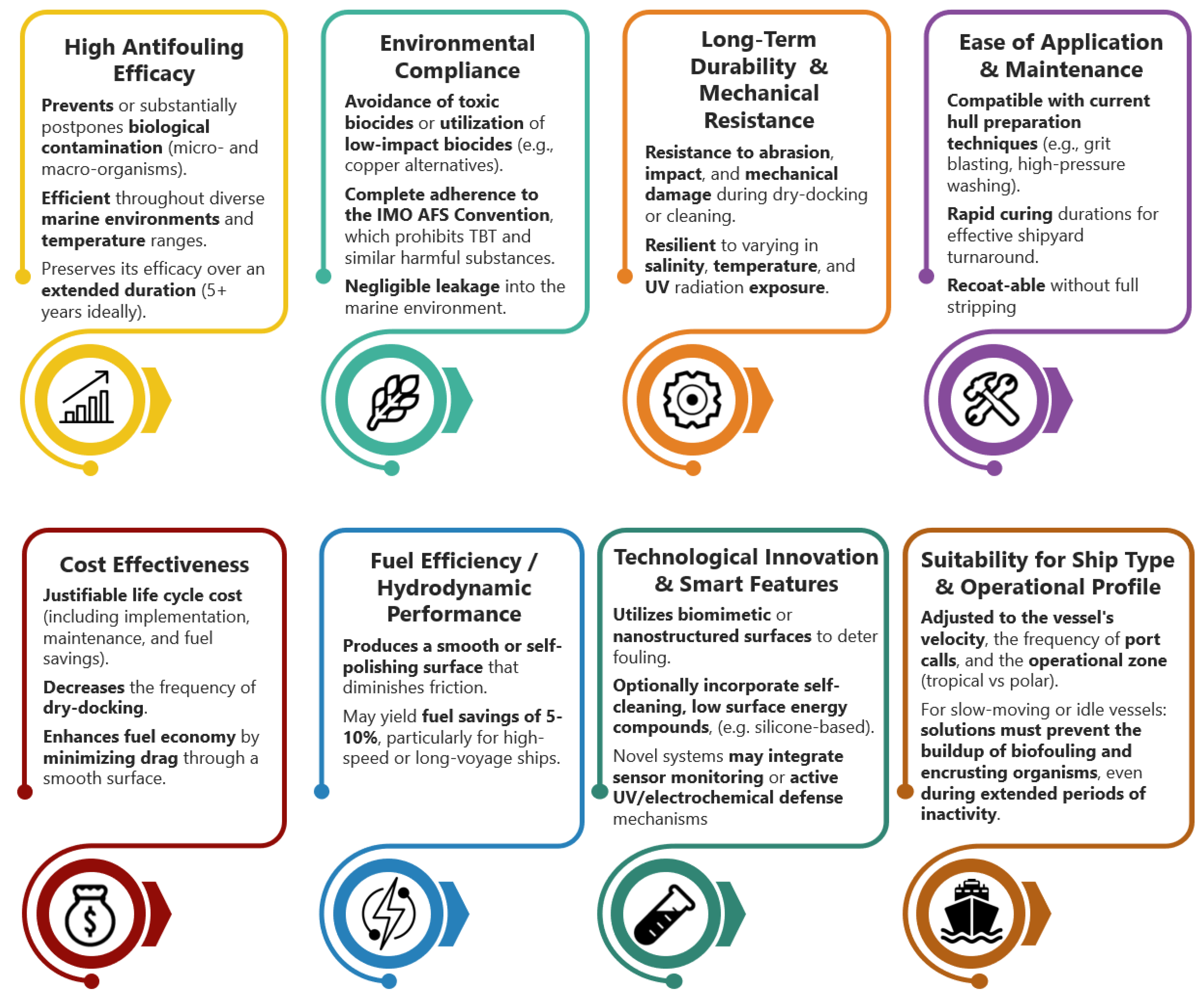
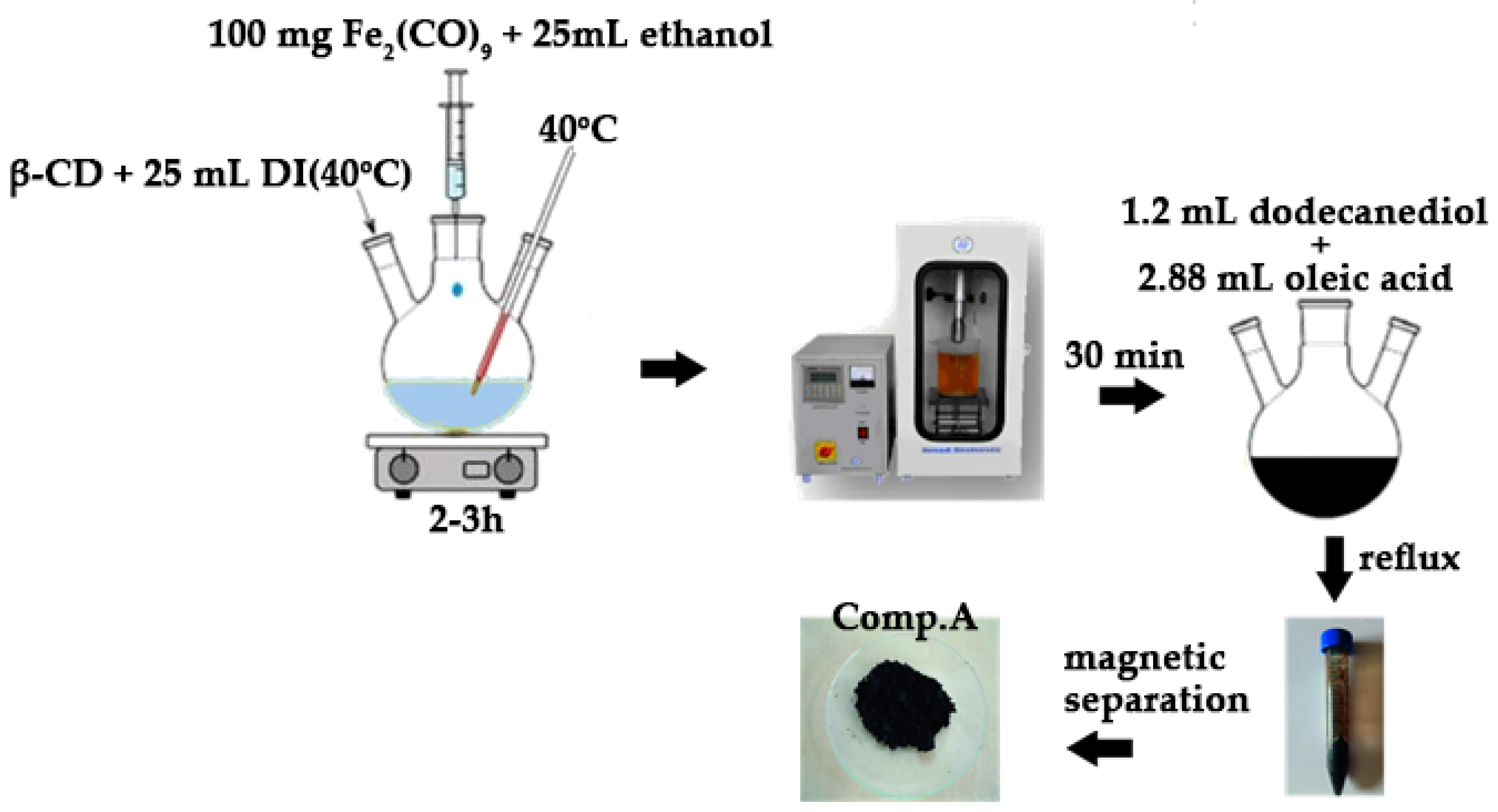
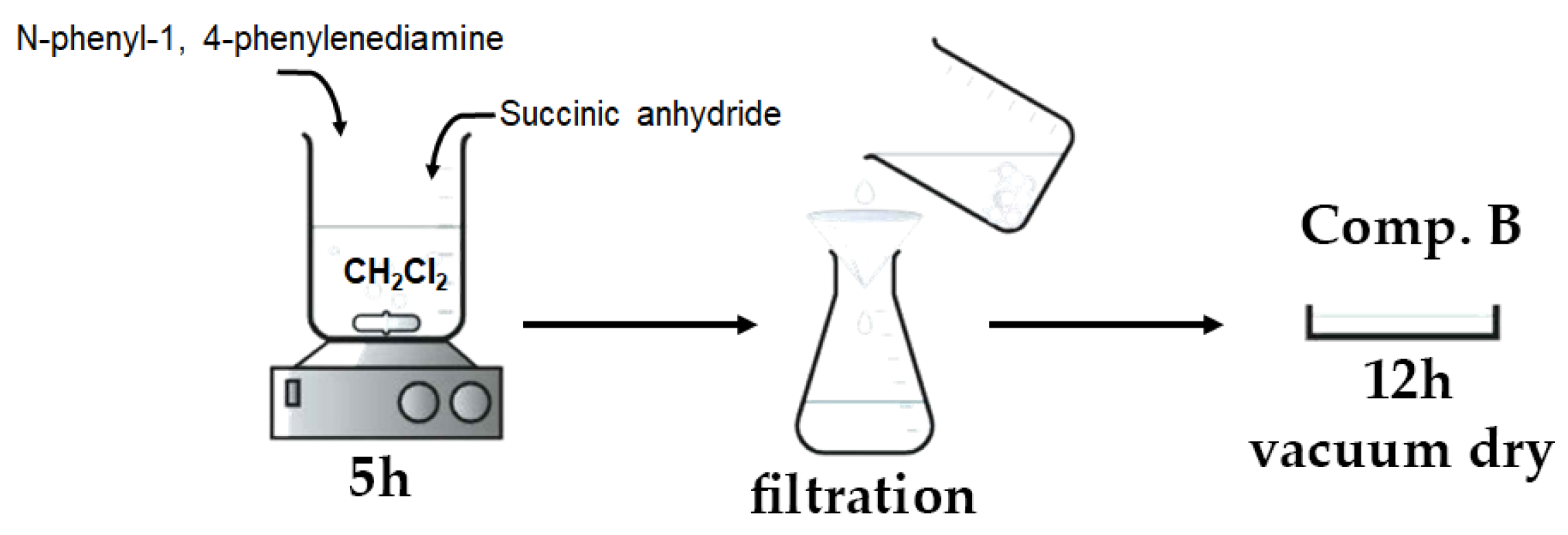
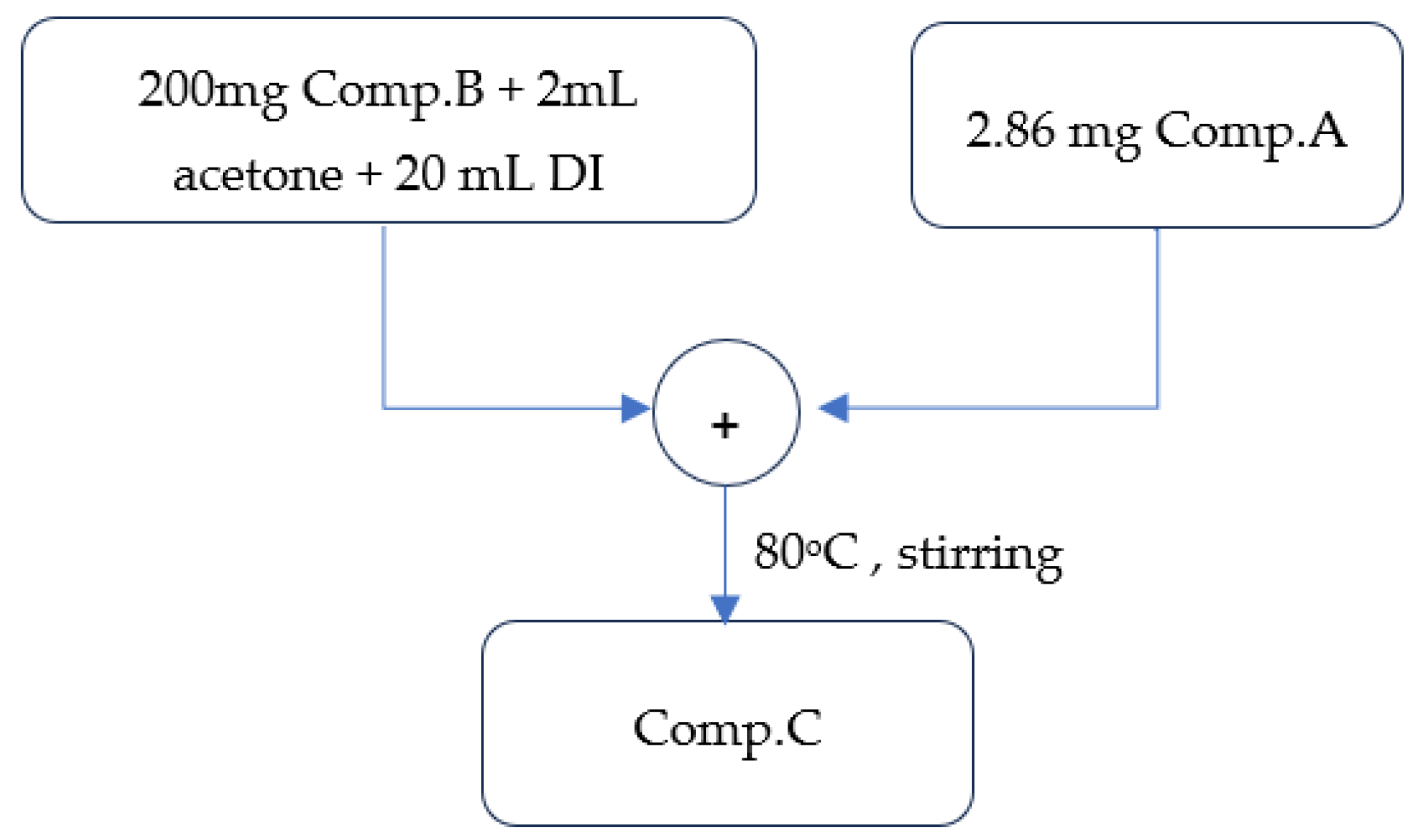




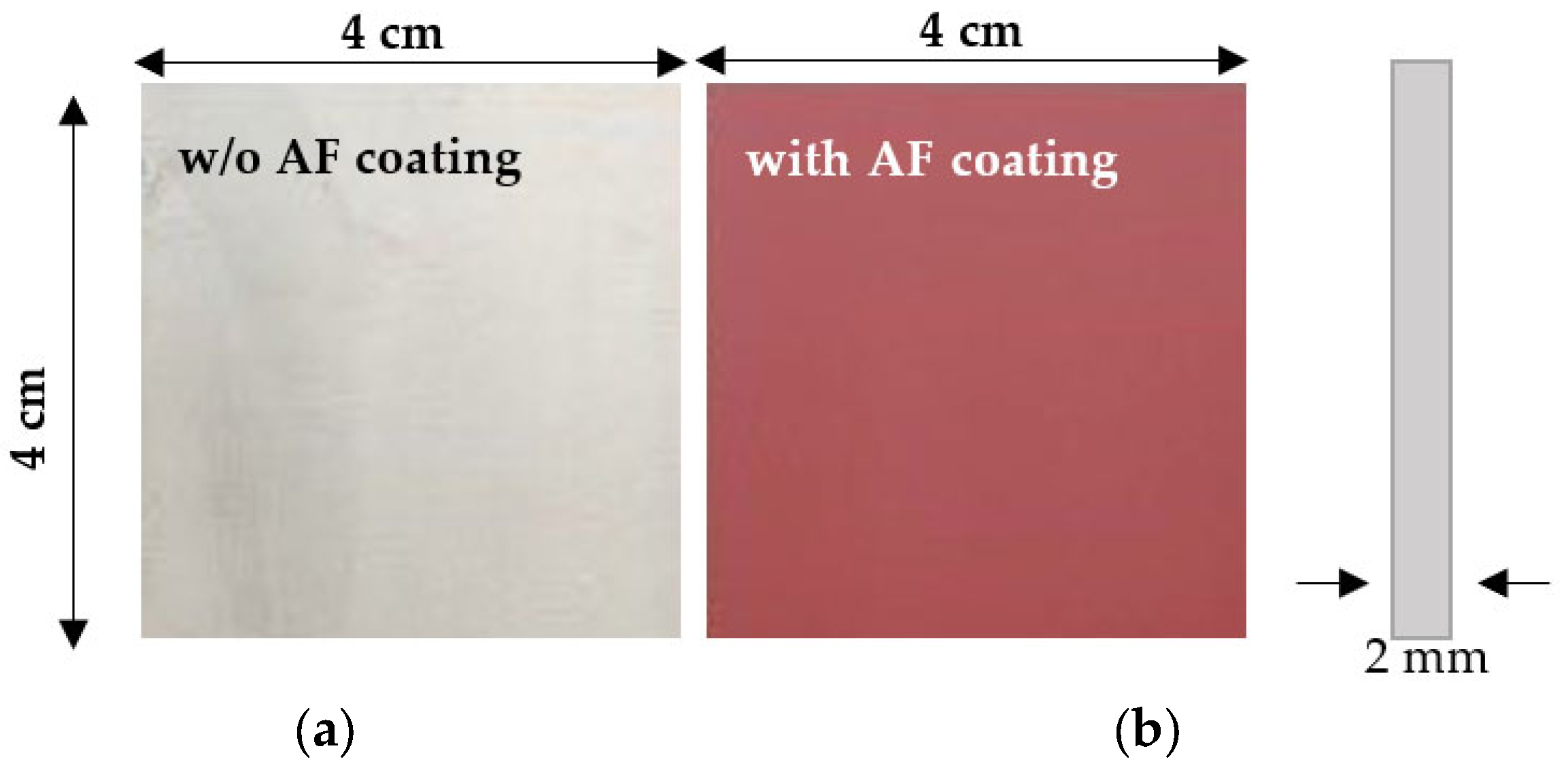
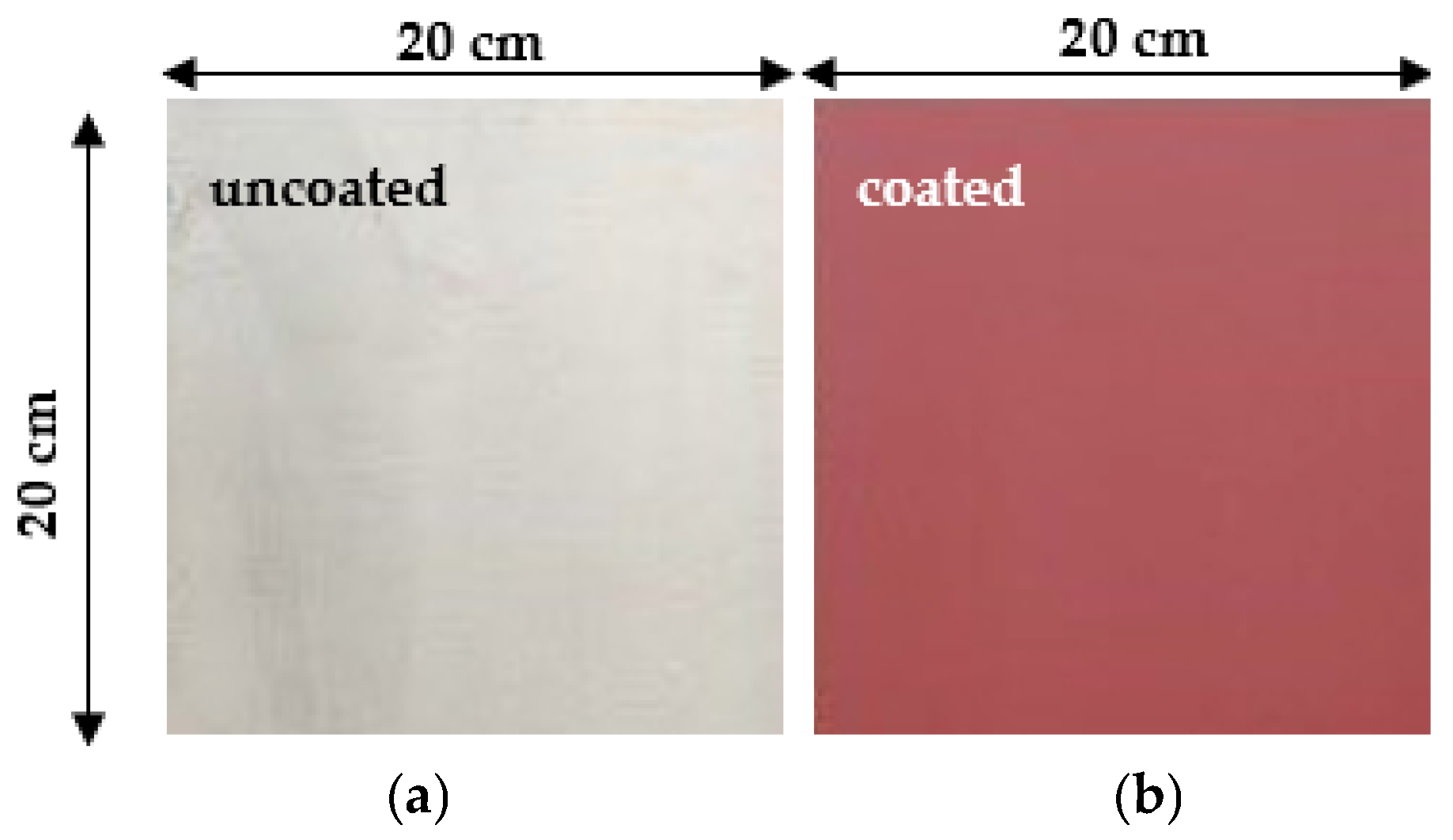
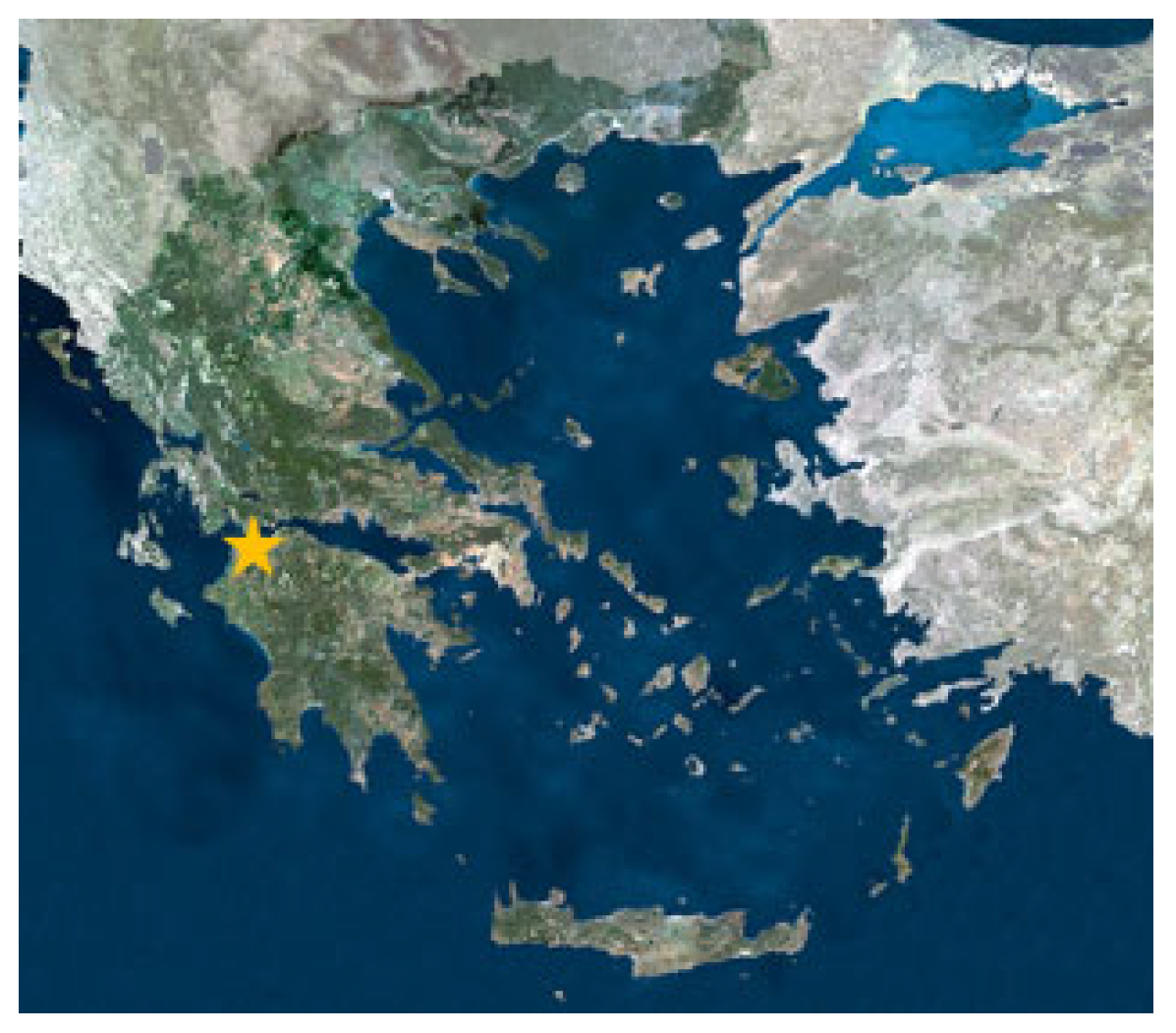
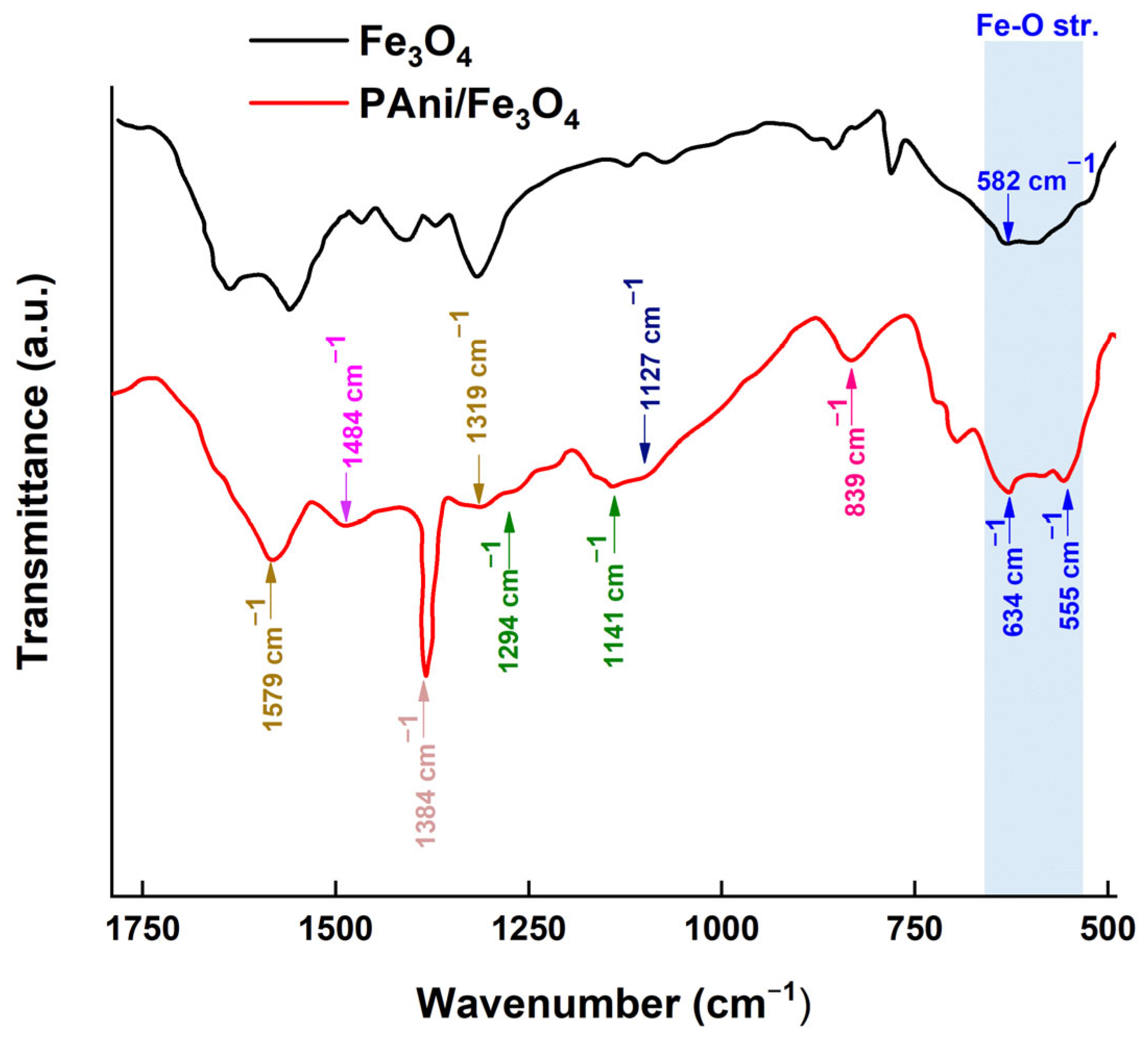

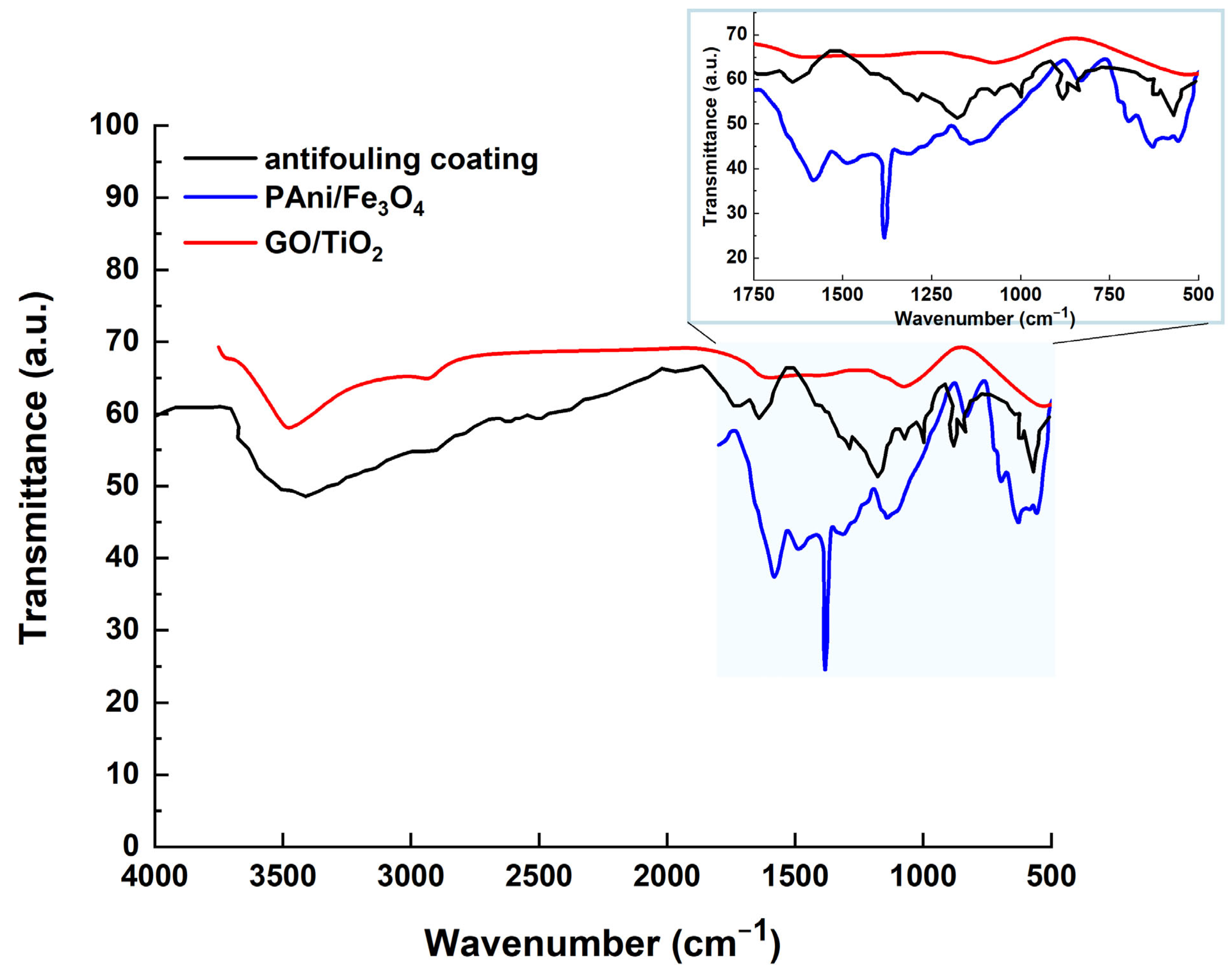
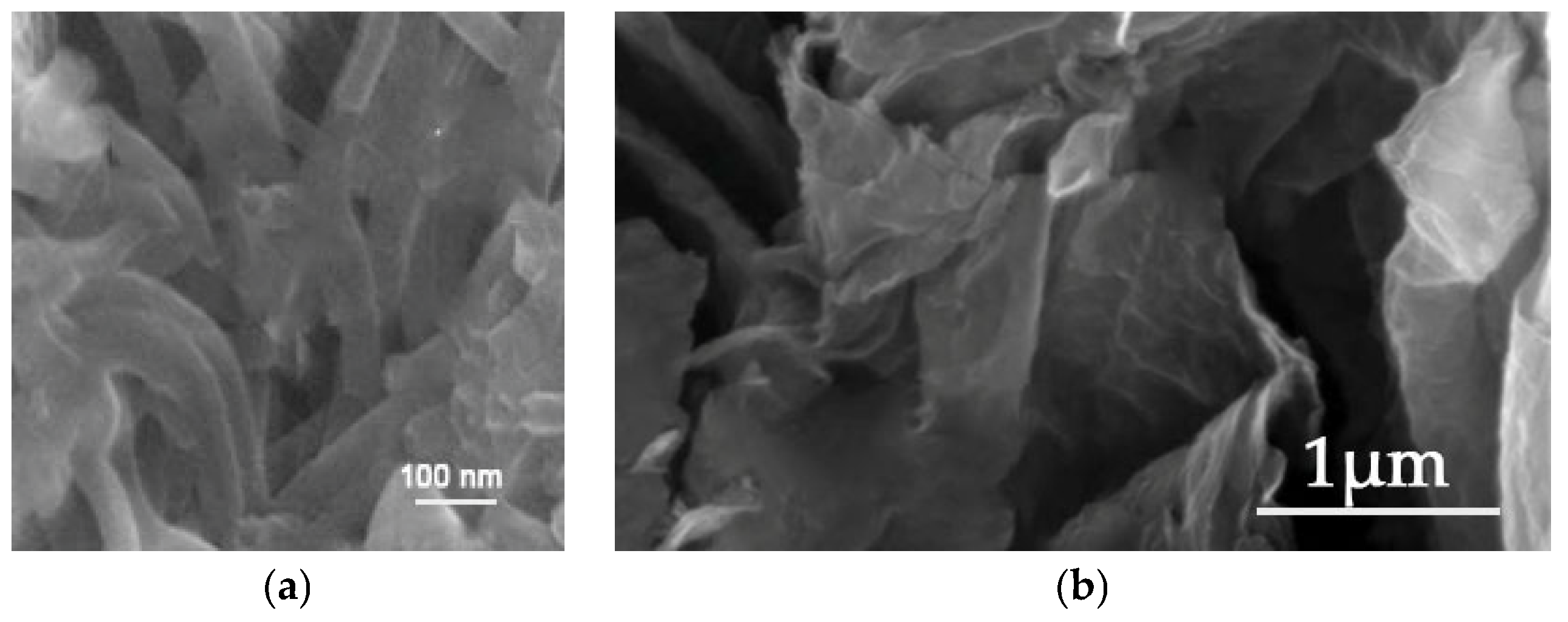

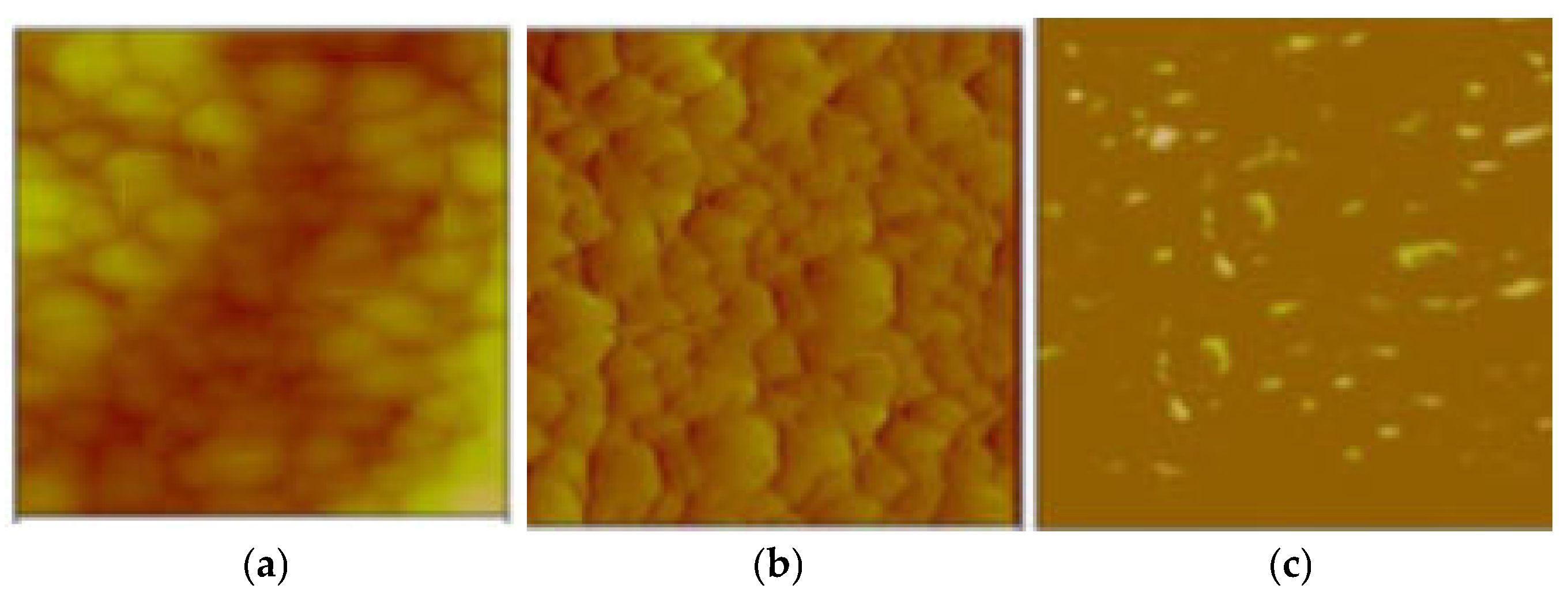
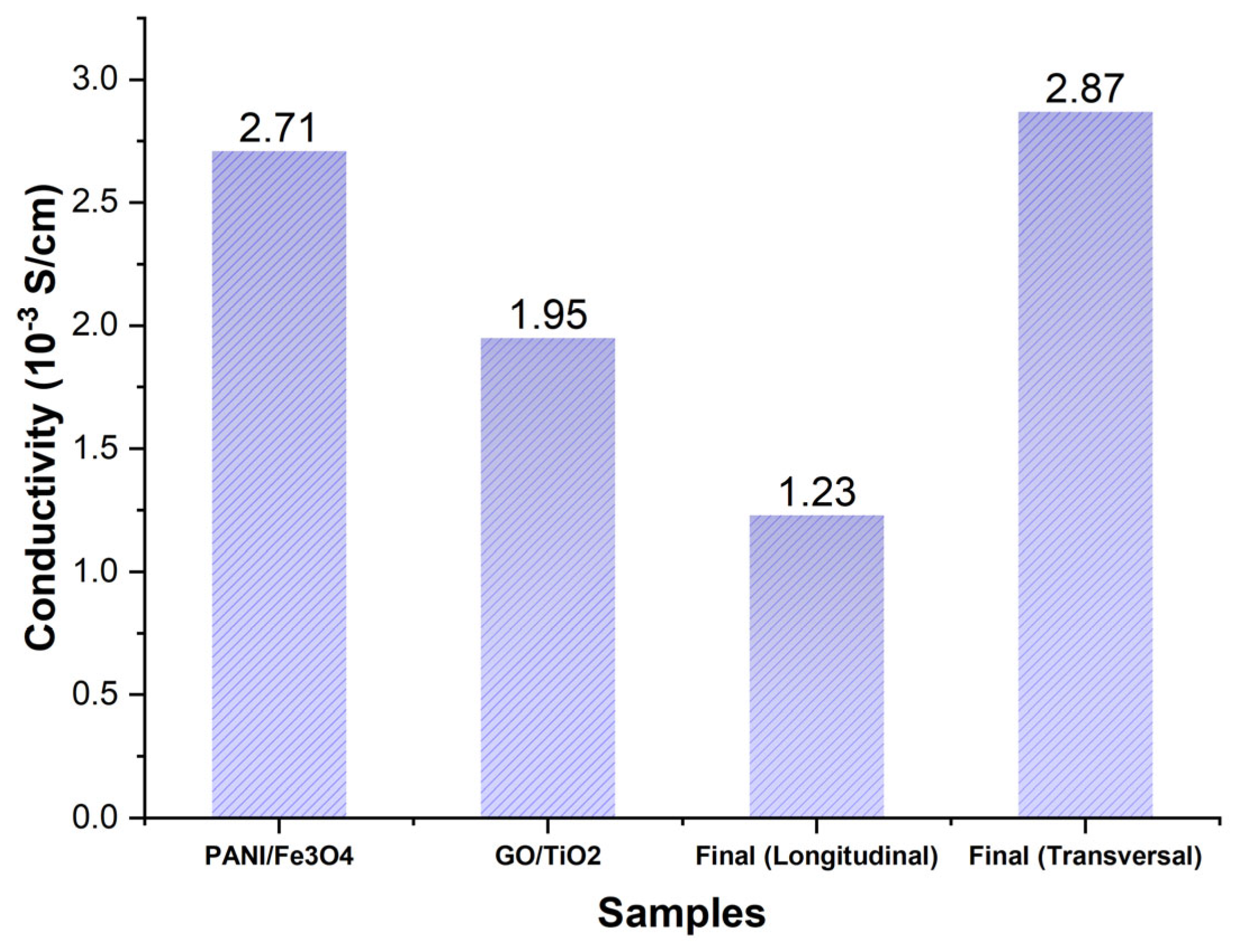

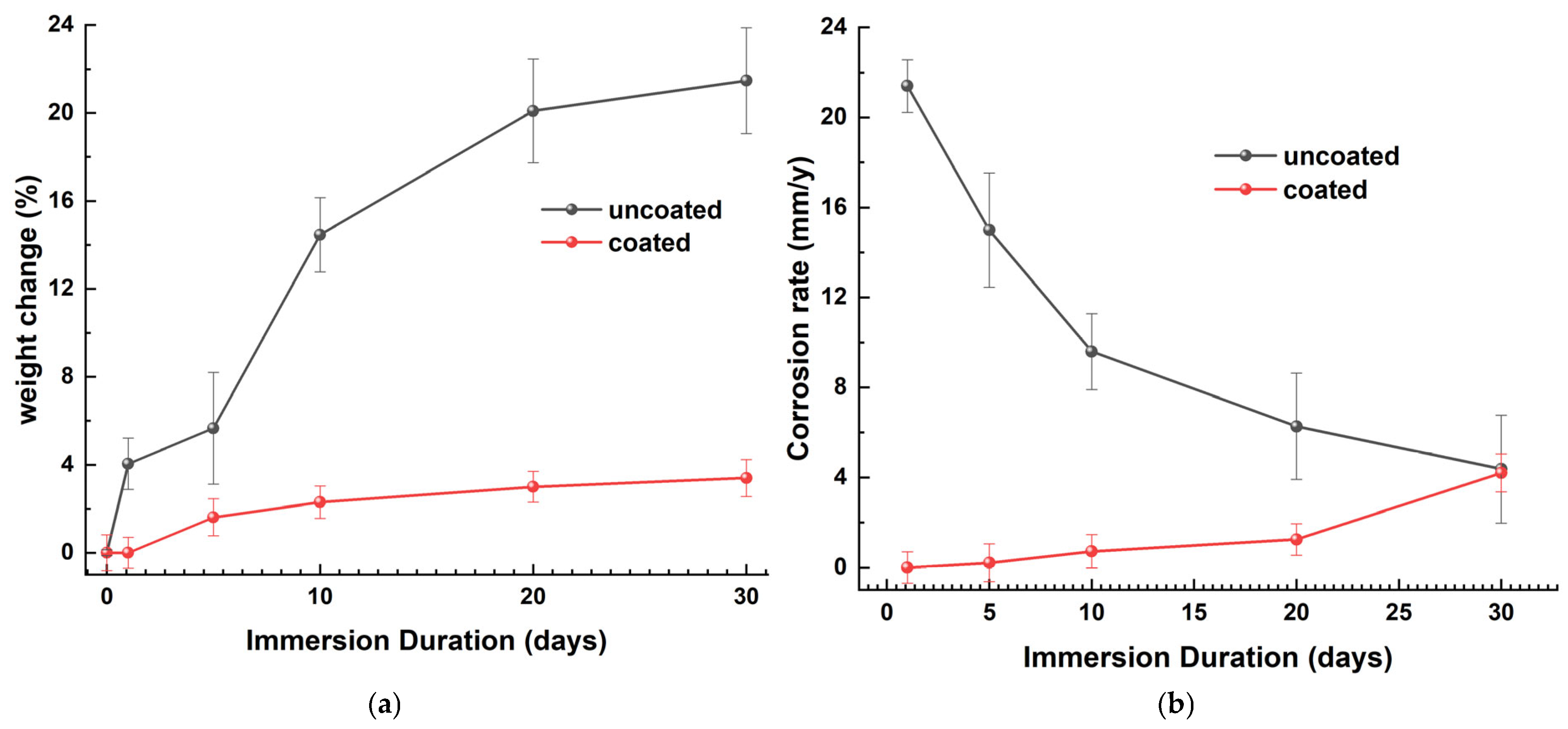
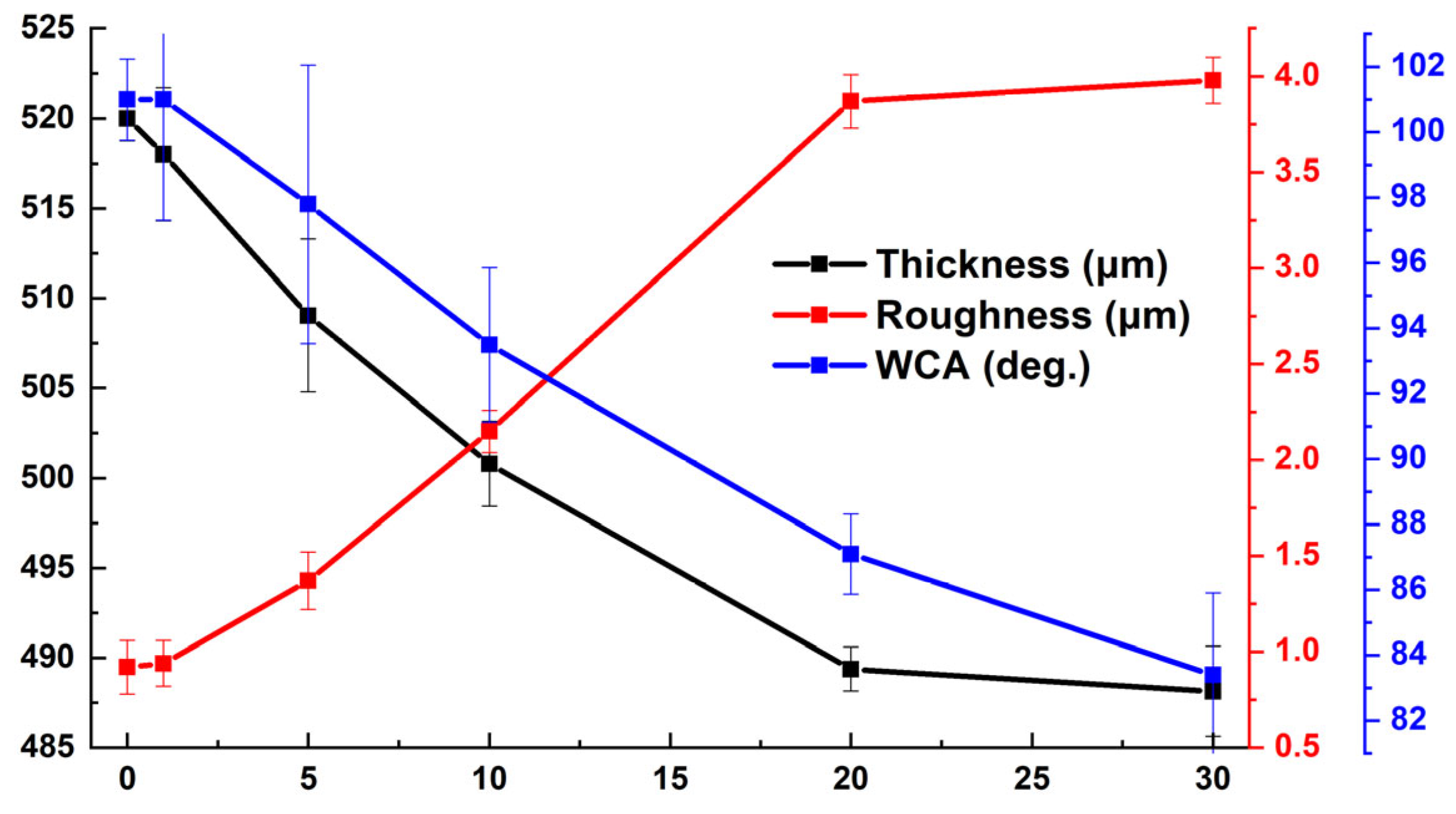
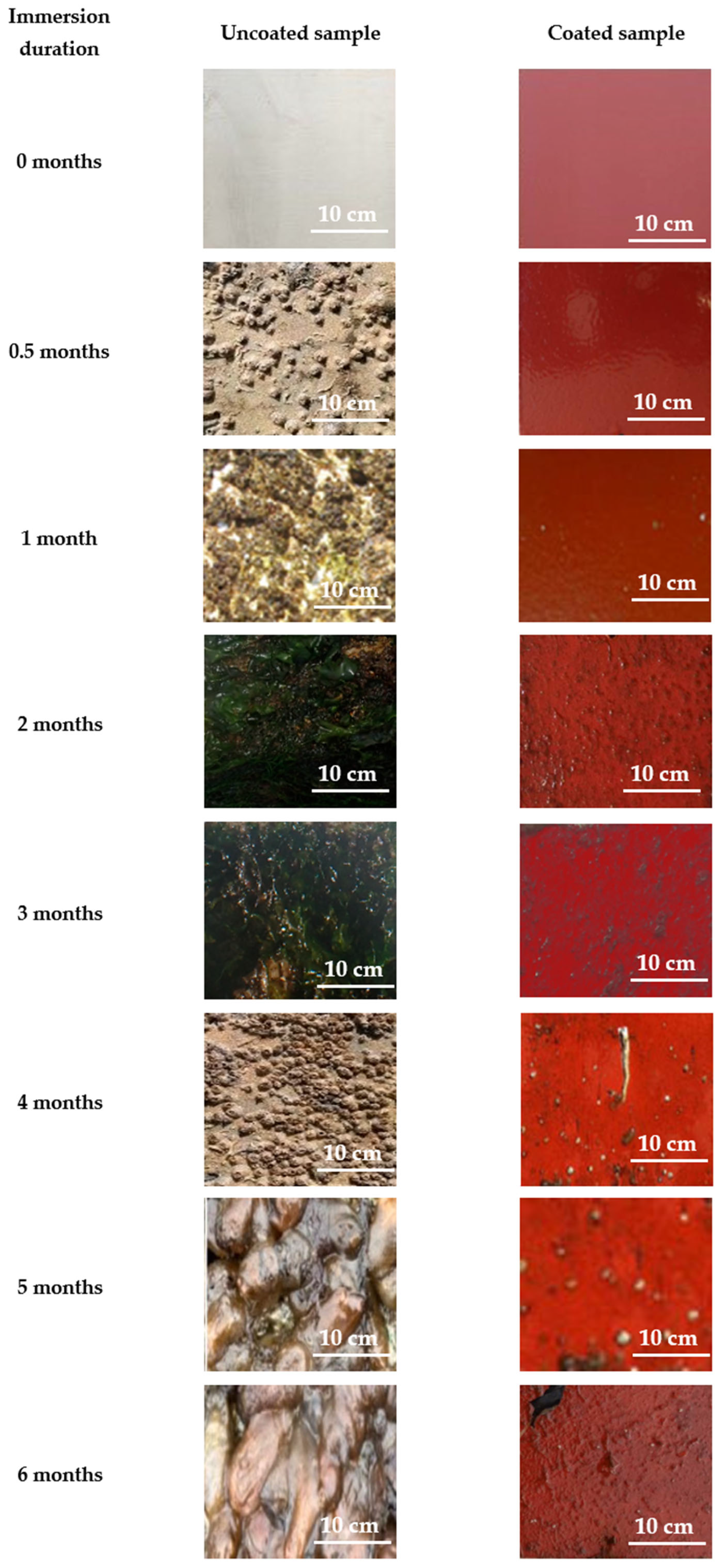

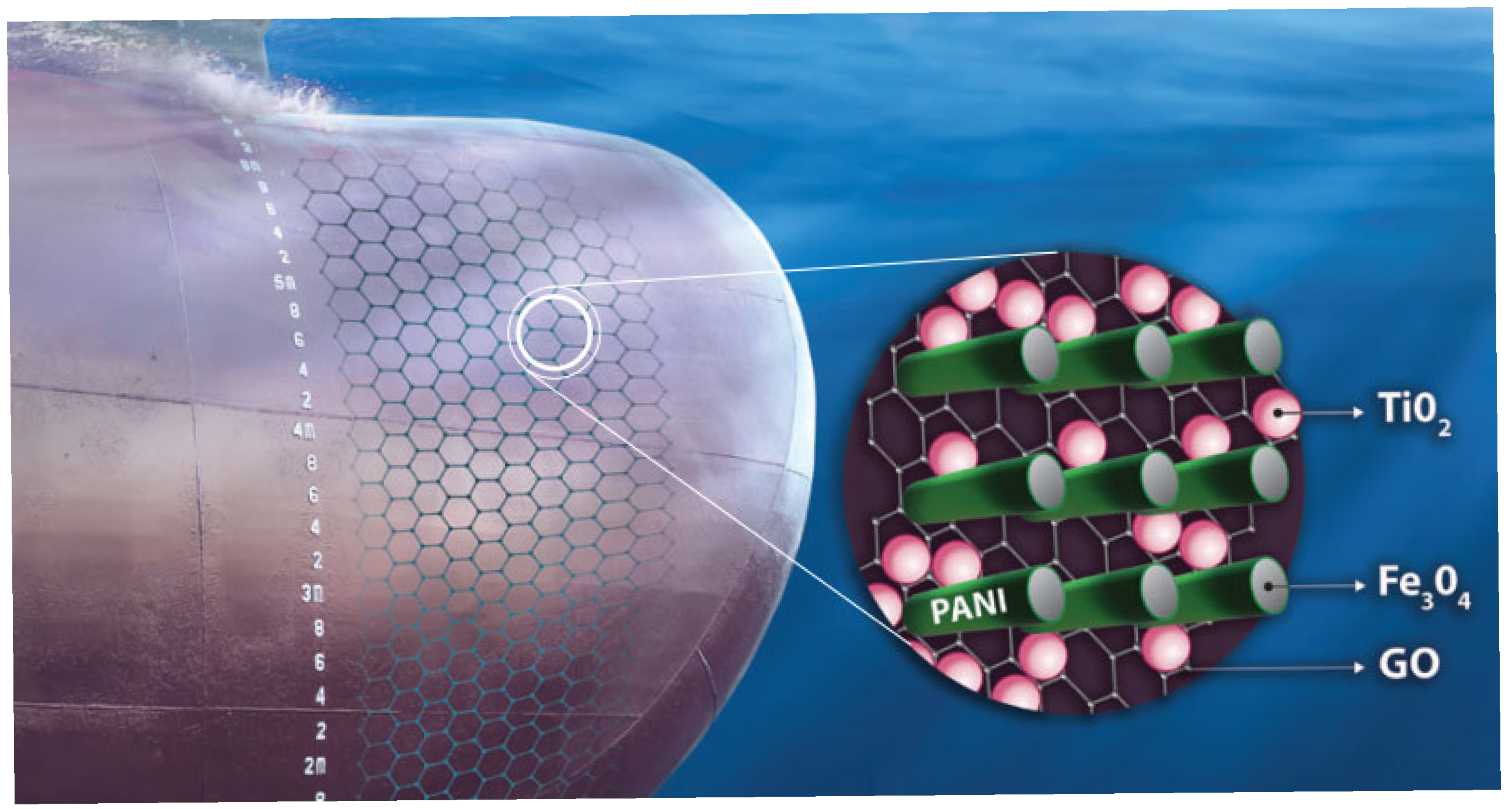
| Type of Fouling | Fouling Organisms | |
|---|---|---|
| Micro-fouling | Biofilm | |
| Fungi and Protozoa | ||
| Ultra Spores | ||
| Brown Algae | ||
| Multicellular Algae | ||
| Tunicate | ||
| Macro-fouling | soft | Macroalgae |
| Solitary anemones | ||
| Hydroids | ||
| Sponges | ||
| hard | Tubeworms | |
| Bryozoans | ||
| Sedentary Polychaetes | ||
| Ascidians | ||
| Mussels | ||
| Oysters | ||
| Barnacles |
| Period | Technology | Active | Advantages | Disadvantages | Environmental Impact | Ref. |
|---|---|---|---|---|---|---|
| Pre–1800s | Organic Coatings (Tallow, Pitch, Tar, Copper Sheathing) | Cu |
|
|
| [9,32] |
| 1800s–Early 1900s | Metal-Based Paints (Copper, Mercury Oxide, Arsenic) | Hg, As, Cu |
|
|
| [9,16,32,33] |
| 1950s–1980s | Organotin Compounds (Especially Tributyltin—TBT) | TBT |
|
|
| [9,10,12,18] |
| 1990s–2000s | Copper-Based SPC Paints (Post-TBT Ban) | Cu, Diuron |
|
|
| [2,3,15,17,32,34] |
| 2000s–2010s | Fouling-Release Coatings (Silicones, Fluoropolymers) | Silicones |
|
|
| [2,11,13,14,35] |
| 2010s–Present | Advanced and Hybrid Technologies | Biocide-free epoxies, nanostructured surfaces, hydrogels/slippery coatings, UV-emitting coatings, enzyme-based coatings |
|
|
| [34,36,37,38,39,40,41] |
| Near-Future (2025+) | Bioinspired and Smart Coatings | Stimuli-responsive surfaces (self-healing, self-cleaning), marine biofilm disruption via low-voltage or acoustic signals, biomimetic structures + AI monitoring for hull maintenance | High potential for a minimal environmental footprint | [42,43,44,45,46,47,48,49] |
| Composition | Fe | Mn | Si | C | P | S |
|---|---|---|---|---|---|---|
| Mass fraction (%) | base | 1.32 | 0.22 | 0.16 | 0.025 | 0.1 |
| Composition | NaCl | MgCl2⋅6H2O | Na2SO4 | CaCl2 | KCl | NaHCO3 | KBr | H3BO3 | SrCl2⋅6H2O | NaF |
|---|---|---|---|---|---|---|---|---|---|---|
| Mass fraction (g/L) | 24.53 | 11.1 | 4.09 | 1.16 | 0.695 | 0.201 | 0.101 | 0.027 | 0.04 | 0.003 |
| Environment | Type | pH | Temperature | Salinity | Humidity | Duration |
|---|---|---|---|---|---|---|
| Room Temperature | Full Immersion | 7 | 25 °C | 3.5% | 75% | 30 days |
| Uncoated Sample | Coated Sample | |||||||||||||||
|---|---|---|---|---|---|---|---|---|---|---|---|---|---|---|---|---|
| Locations | Fouling Organisms | 0.5 m | 1 m | 2 m | 3 m | 4 m | 5 m | 6 m | 0.5 m | 1 m | 2 m | 3 m | 4 m | 5 m | 6 m | |
| Patra | Micro-fouling | Biofilm | Χ | √ | √ | √ | √ | √ | √ | Χ | Χ | √ | √ | √ | √ | √ |
| Fungi and Protozoa | Χ | √ | √ | √ | √ | √ | √ | Χ | Χ | √ | √ | √ | √ | √ | ||
| Ultra Spores | Χ | √ | √ | √ | √ | √ | √ | Χ | Χ | Χ | Χ | Χ | √ | √ | ||
| Brown Algae | Χ | Χ | Χ | √ | √ | √ | √ | Χ | Χ | Χ | Χ | Χ | Χ | Χ | ||
| Multicellular Algae | Χ | Χ | √ | √ | √ | √ | √ | Χ | Χ | Χ | Χ | Χ | Χ | Χ | ||
| Tunicate | Χ | √ | √ | √ | √ | √ | √ | Χ | Χ | Χ | Χ | Χ | Χ | Χ | ||
| Macro-fouling | Macroalgae | Χ | √ | √ | √ | √ | √ | √ | Χ | Χ | Χ | Χ | Χ | Χ | Χ | |
| Bryozoans | Χ | √ | √ | √ | √ | √ | √ | Χ | Χ | Χ | Χ | Χ | Χ | Χ | ||
| Solitary Anemones | Χ | Χ | Χ | √ | √ | √ | √ | Χ | Χ | Χ | Χ | Χ | Χ | Χ | ||
| Hydrates | Χ | Χ | √ | √ | √ | √ | √ | Χ | Χ | Χ | Χ | Χ | Χ | Χ | ||
| Tubeworms | Χ | Χ | Χ | √ | √ | √ | √ | Χ | Χ | Χ | Χ | Χ | Χ | Χ | ||
| Sedentary Polychaetes | Χ | Χ | Χ | Χ | Χ | Χ | Χ | Χ | Χ | Χ | Χ | Χ | Χ | Χ | ||
| Ascidians | Χ | Χ | √ | Χ | Χ | Χ | √ | Χ | Χ | Χ | Χ | Χ | Χ | Χ | ||
| Sponges | Χ | Χ | √ | Χ | Χ | Χ | √ | Χ | Χ | Χ | Χ | Χ | Χ | Χ | ||
| Mussels | Χ | Χ | Χ | Χ | √ | √ | √ | Χ | Χ | Χ | Χ | Χ | Χ | Χ | ||
| Oysters | Χ | Χ | Χ | Χ | √ | √ | √ | Χ | Χ | Χ | Χ | Χ | Χ | Χ | ||
| Barnacles | Χ | Χ | Χ | Χ | √ | √ | √ | Χ | Χ | Χ | Χ | Χ | Χ | Χ | ||
| Coating Type | Key Material | Antifouling Mechanism | Effectiveness | Advantages | Limitations | Ref |
|---|---|---|---|---|---|---|
| PAni-based coatings | PAni, doped variants | Conductivity enables reactive oxygen species generation and deters biofilm formation via surface charge | Moderate–high (up to 70% biofilm inhibition) | Corrosion resistance synergy, tunable conductivity | Limited mechanical strength, risk of over-conductivity promoting corrosion | [67,76] |
| Graphene–PAni nanocomposites | Graphene oxide + PAni | Barrier effect + electron transfer + photocatalytic activity | High (long-term biofouling resistance observed) | Lightweight, superior barrier properties | Potential cost of graphene, dispersion challenges in polymers | [77,78,79,80] |
| Graphene/PAni electro-membranes | Graphene + PAni | Low-voltage electrostatic fouling mitigation (~1 V for flux enhancement) | Very high (>100% flux improvement, low adhesion rates) | Active antifouling without biocides, energy-efficient | Requires an external power source (low-voltage but still auxiliary infrastructure) | [81,82,83] |
| PEDOT 1 conductive polymer coatings | PEDOT | Electrically modulated bio-adhesion prevention | Moderate (~50% settlement reduction in larvae tests) | Flexible, chemically stable, easy-to-apply thin films | Lower conductivity than PANI, degradation in marine environments | [84,85] |
| Cu2O/PAni hybrid paints | Cu2O + PAni doped blends | Biocidal Cu2+ release modulated by a conductive matrix | High (effective in reducing copper leaching) | Synergy of biocidal and conductive mechanisms | Environmental concerns over Cu release if uncontrolled | [86] |
| This work | PAni + Fe3O4 + GO + TiO2 | Reactive oxygen species generation, anisotropic conductivity | Biofilm disruption + anticorrosion synergy | Directional properties | Complex synthesis, possible aggregation of Fe3O4 particles |
| Immersion Duration (Days) | IE% |
|---|---|
| 0 | 95.99 |
| 1 | 95.08 |
| 5 | 94.45 |
| 10 | 89.45 |
| 20 | 86.70 |
| 30 | 85.05 |
Disclaimer/Publisher’s Note: The statements, opinions and data contained in all publications are solely those of the individual author(s) and contributor(s) and not of MDPI and/or the editor(s). MDPI and/or the editor(s) disclaim responsibility for any injury to people or property resulting from any ideas, methods, instructions or products referred to in the content. |
© 2025 by the authors. Licensee MDPI, Basel, Switzerland. This article is an open access article distributed under the terms and conditions of the Creative Commons Attribution (CC BY) license (https://creativecommons.org/licenses/by/4.0/).
Share and Cite
Vourna, P.; Falara, P.P.; Papadopoulos, N.D. The Investigation of a Biocide-Free Antifouling Coating on Naval Steels Under Both Simulated and Actual Seawater Conditions. Processes 2025, 13, 2448. https://doi.org/10.3390/pr13082448
Vourna P, Falara PP, Papadopoulos ND. The Investigation of a Biocide-Free Antifouling Coating on Naval Steels Under Both Simulated and Actual Seawater Conditions. Processes. 2025; 13(8):2448. https://doi.org/10.3390/pr13082448
Chicago/Turabian StyleVourna, Polyxeni, Pinelopi P. Falara, and Nikolaos D. Papadopoulos. 2025. "The Investigation of a Biocide-Free Antifouling Coating on Naval Steels Under Both Simulated and Actual Seawater Conditions" Processes 13, no. 8: 2448. https://doi.org/10.3390/pr13082448
APA StyleVourna, P., Falara, P. P., & Papadopoulos, N. D. (2025). The Investigation of a Biocide-Free Antifouling Coating on Naval Steels Under Both Simulated and Actual Seawater Conditions. Processes, 13(8), 2448. https://doi.org/10.3390/pr13082448






